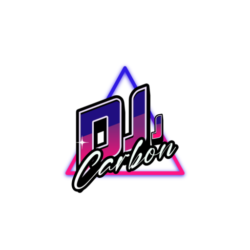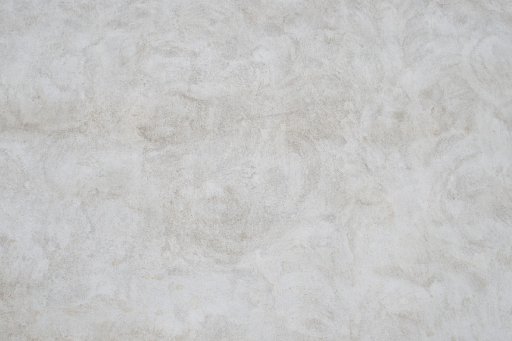Whether you’re spinning at a packed club in Oakland or learning the ropes at home, choosing the right DJ equipment is crucial to your success. As a beginner, navigating the world of DJ gear can be overwhelming, but by understanding the essentials, you can build a setup that grows with you and helps you craft your sound.
This guide is designed to break down the basics of DJ equipment, giving you the knowledge you need to make informed decisions, whether you’re based in the Bay Area like me or anywhere in the world.
1. Introduction to DJ Equipment: Setting the Stage for Success
At its core, DJing is about manipulating sound, creating seamless transitions, and keeping the energy alive. To do that, you need the right tools. Here are the basic components of a DJ setup:
- Turntables/CDJs: The heart of your setup, where you control and play your music.
- Mixer: The bridge that allows you to blend and transition between tracks.
- Headphones: Your lifeline for cueing and preparing tracks.
- Monitors: External speakers that let you hear your mix in real time.
- DJ Software: For many modern DJs, software is essential for organizing and manipulating tracks digitally.
For beginners, it’s important to focus on building a solid foundation. While advanced setups can be packed with extra gear and complex tools, starting with the basics will help you master the essentials before diving into more sophisticated equipment.
2. Turntables and CDJs: The Heart of DJing
Turntables and CDJs are where your music comes to life. Understanding the differences between these two is key to choosing what works best for you.
- Turntables: Traditional turntables are used to play vinyl records. They’re perfect for scratching and creating that classic analog sound. However, they can be expensive and require more maintenance.
- CDJs: These are digital versions of turntables, playing music from USB drives, CDs, or digital files. CDJs are easier to maintain than turntables and offer more features like loops and cue points, which are useful for mixing.
Pros and Cons:
- Turntables:
- Pros: Great for scratching and purists who love the feel of vinyl.
- Cons: Can be bulky and require vinyl records, which can be expensive.
- CDJs:
- Pros: Digital flexibility, more portable, and compatible with digital files.
- Cons: Less tactile than turntables, can feel less “authentic” to some DJs.
What to Look for as a Beginner: If you’re just starting out, CDJs or entry-level controllers might be the better choice. Look for gear that’s durable, has built-in features like cue points, and integrates well with DJ software. Many local DJs in Oakland, and around the world, started with simple controllers before upgrading to turntables or advanced CDJs.
3. Mixers: Crafting the Perfect Soundscape
Your mixer is the tool that brings it all together, allowing you to control volume, EQ, and transitions between tracks. Here’s what you need to know:
- What Does a Mixer Do?
A mixer lets you fade in and out between songs, adjust sound frequencies, and apply effects. It’s essential for making smooth transitions and keeping the energy of your set intact. - Key Features for Beginners:
- EQ Controls: Adjust bass, mid, and treble to balance the sound between tracks.
- Faders: For smooth transitions between your music channels.
- Headphone Cueing: Allows you to listen to the next track without the audience hearing it.
Choosing the Right Mixer:
For beginners, look for a mixer that is simple but functional. If you plan to mix genres like Hip Hop, EDM, or Dancehall, focus on getting a mixer with good fader control and responsive EQs. Many DJs in the Bay Area favor mixers with strong crossfaders for scratching, but if you’re focusing more on seamless transitions, prioritize EQ control.
4. Headphones and Monitors: Curating Your Audio Environment
Having the right audio equipment is essential for crafting your sound. Here’s why headphones and monitors are critical for DJs:
- Headphones: You’ll need high-quality, closed-back headphones to block out external noise while you cue up your next track. Make sure they’re comfortable for long sets and provide excellent sound isolation.
- Monitors: These are the speakers you’ll use to hear what your audience hears. While not always necessary for home practice, they’re crucial for live performances. Look for monitors with good bass response, as it will help you better understand how your tracks sound in a live environment.
What to Look for in Headphones and Monitors:
As a beginner, invest in a pair of durable, comfortable headphones. For monitors, powered speakers that don’t require a separate amplifier are a good option. If you’re DJing in small local venues or at house parties, you won’t need huge speakers, but for larger events, bigger monitors are a must.
5. Software and Digital Tools: Navigating the Virtual Soundscape
For many DJs today, digital tools and software are an integral part of the craft. Here’s how to choose the right software:
- Popular DJ Software Options:
- Serato DJ: Popular for its user-friendly interface and extensive features for beginners and pros alike.
- Rekordbox: Often paired with Pioneer gear, it’s great for digital and live DJing.
- Virtual DJ: A solid free option for beginners looking to practice without investing in pricey software.
- Traktor: Known for its precision, it’s ideal for DJs who love to mix electronic and dance music.
Integrating Digital Tools with Your Setup:
If you’re starting with a controller, make sure your DJ software integrates easily with your hardware. Most controllers come with their own software, which is a great way to start before upgrading.
Choosing Software Based on Skill Level:
For beginners, it’s best to start with software that has a simple, intuitive interface. You don’t need every feature right away—focus on learning the basics like cueing, mixing, and syncing tracks. As you grow, you can explore more advanced tools like effects and looping.
6. Accessories and Must-Haves: Enhancing Your DJing Experience
Finally, there are a few accessories that can enhance your DJ experience:
- Laptop Stand: Keeps your laptop at eye level for easy track selection.
- External Hard Drive: For backing up your music library.
- Protective Cases: Essential for keeping your gear safe during transport.
- Extra Cables and Adapters: Always carry backups—gear failure can ruin a set.
Maintaining Your Gear:
Take care of your equipment by cleaning your gear regularly, storing it properly, and protecting it with cases. The Bay Area’s climate can be tough on electronics, so make sure your setup is protected from dust, heat, and moisture.
Final Thoughts
Building your first DJ setup is exciting, whether you’re based in Oakland or any other part of the world. Start with the essentials—turntables or CDJs, a mixer, quality headphones, and solid software—and add on as your skills grow. Remember, your gear is an investment in your future as a DJ, so choose equipment that supports your goals and helps you build your unique sound. Stay tuned, stay creative, and let your gear take you to new heights!



